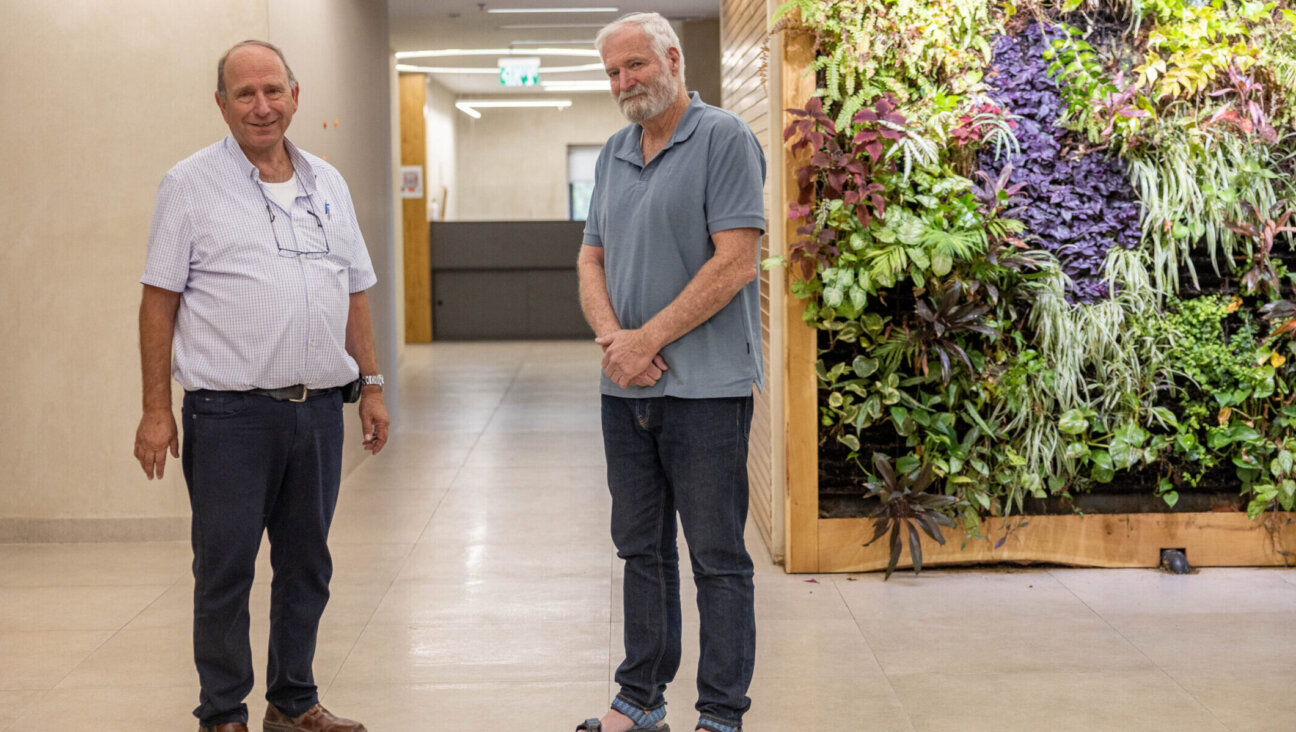Jewish DNA of Rue Bernard

Call it the world’s most local travel magazine. Every issue, Berlin-based Flaneur profiles one iconic street. And its latest issue — the first to look outside Germany — delves deep into Rue Bernard, the Montreal thoroughfare whose Jewish DNA stretches back a century. “It represents Montreal in a hyperlocal microcosm, meaning the street reflects the Franco- and Anglophone identities at the same time as well as the Jewish community,” founder/publisher Ricarda Messner told the Forward. “The stark contrast between the street’s Outremont and Mile End side” — ultra-Orthodox and hipster, respectively — “was really the vital aspect of our choice.”
The magazine’s first issue covered Kantstrasse in Berlin; #2 surveyed Leipzig’s Georg-Schwarz-Strasse. “The magazine embraces the street’s complexity, its layers and fragmented nature with a literary approach,” says its web site. “The reader is challenged to become a Flaneur himself, wandering the pages of the magazine as if discovering the street.” Editor-in-chief Fabian Saul talked to the Forward from Rome, where he and Messner are scouting subjects for issue #4.
Michael Kaminer: There’s been a lot of tension between Orthodox Jews and everyone else in Outremont. Did you sense that as you got immersed in daily life on Bernard?
Fabian Saul: We met with a Hasidic family one evening and sat together and talked about religion, belief, politics, culture, family life. Afterwards, everyone that we talked to about that evening didn’t believe us or they were quite surprised, the stereotype being that these people never open up their homes to strangers. So, yes, the tensions were always part of our conversations and encounters on the street.
For you as Europeans, what was the experience of living on this street? Totally alien, very familiar, or somewhere in between?
One of our writers explored that. For us it was an intense experience coming to a country that has always been a country of settlement and immigration, encountering a street that was plastered with identities. On Bernard you have the Hasidic Jewish community, the Baptists, the Armenians, the Greek, the French, the Italian and Portuguese, and all of them living together peacefully for the most part. And the openness and kindness of the people made us feel at home more than anywhere else.
How deeply can you really get to understand a street or a city in two months?
There is no way to exceed a place, so our concept is to see the place as a fragmented structure. That’s why it says in our concept: “This could be Rue Bernard.” The goal is not to understand everything, but let yourself be guided by curiosity and human encounters. We tell stories and are looking for the universal in the very subjective in a limited microcosm. That limitation, though, allows us to immerse ourselves and understand quite a lot of the place. Once again, we gain a rather literary understanding and there is a knowledge in every perspective onto the street. The childlike curiosity of a total stranger can be as enriching as the perspective of a person that has lived on the street his entire life.
How Jewish does Bernard St. still feel? How Jewish did Montreal feel?
Very Jewish and I think that is also a matter of fashion and food, because these two aspects are very visible. I also think that the important role that Jewish immigration played for Montreal society is still something we could grasp. There is a mirroring effect as the Jews found themselves in a comparable though not similar situation towards the Quebec society as the Francophone society of Quebec found itself confronted with an anglophone Canada. It is a difficult history and to me it remains an indicator for the tolerance and openness of Quebec society.
How did your encounters with ultra-Orthodox Jews on the street change your impressions or perceptions of them?
The evening with the Hasidic family completely changed my perception. At the end of the day, they might seem weird to a lot of people in the neighborhood as much as those people seem weird to them. It is not possible to fully understand each other and it is not necessary to become an expert of each other’s lives.
It is more important to see the common things and the most common thing is that everyone in Canada is an immigrant that once came here for the same promise of acceptance and freedom. To create a society that is based on a social contract in which all religions, languages and cultures can live peacefully must be a goal and something like the charter of values which was based on a nationalistic idea of identity was very misleading and harmful.
Do you have a preference between St. Viateur and Fairmount bagels? It’s a major issue in that neighborhood.
For me it was always the St. Viateur, all dressed. Nothing compares to it.
A message from our CEO & publisher Rachel Fishman Feddersen

I hope you appreciated this article. Before you go, I’d like to ask you to please support the Forward’s award-winning, nonprofit journalism during this critical time.
We’ve set a goal to raise $260,000 by December 31. That’s an ambitious goal, but one that will give us the resources we need to invest in the high quality news, opinion, analysis and cultural coverage that isn’t available anywhere else.
If you feel inspired to make an impact, now is the time to give something back. Join us as a member at your most generous level.
— Rachel Fishman Feddersen, Publisher and CEO























